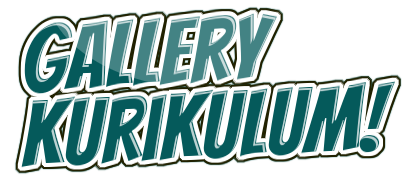Your home’s siding plays a crucial role in protecting it from the elements and maintaining its aesthetic appeal. Regular maintenance ensures longevity, prevents costly repairs, and keeps your home looking great year-round. In this guide, we’ll walk you through everything you need to know about siding maintenance, from cleaning and repairs to long-term preservation strategies.
Understanding Different Types of Siding
Vinyl Siding
One of the most popular choices, vinyl siding is affordable, low maintenance, and resistant to rot. However, it can crack in extreme cold and fade over time.
Wood Siding
Wood siding offers a natural and classic look but requires regular staining and sealing to prevent rot and insect damage.
Fiber Cement Siding
A durable and fire-resistant option, fiber cement siding mimics the look of wood without the high maintenance. It requires periodic painting and sealing.
Metal Siding
Aluminum and steel siding are strong and weather-resistant but can dent easily and may require repainting over time.
Brick and Stone Siding
Extremely durable and low maintenance, brick and stone siding only need occasional cleaning and repointing of mortar joints.
How Often Should You Maintain Your Siding?
- Inspect your siding at least twice a year (spring and fall).
- Clean your siding once a year to remove dirt and mildew.
- Address any repairs immediately to prevent further damage.
Cleaning Your Siding
Best Cleaning Solutions for Different Siding Materials
- Vinyl: Mild detergent and water
- Wood: Oxygen bleach or mild soap
- Fiber Cement: Non-abrasive cleaners
- Metal: Vinegar and water solution
- Brick and Stone: Pressure washing with mild detergent
Tools Required for Effective Cleaning
- Soft-bristle brush or sponge
- Garden hose or pressure washer
- Bucket and cleaning solution
Step-by-Step Cleaning Process
- Rinse siding with water.
- Apply cleaning solution and scrub gently.
- Rinse thoroughly with a garden hose or low-pressure washer.
- Let it dry completely.
Inspecting for Damage
Common Signs of Damage
- Cracks, warping, or holes
- Mold and mildew growth
- Water stains and leaks
- Pest infestations (termites, carpenter ants)
Repairing Damaged Siding
Fixing Minor Cracks and Holes
- Use caulk or filler for small gaps.
- Sand and repaint the area for a seamless finish.
Replacing Damaged Panels
- Remove the affected section.
- Install a new panel and secure it properly.
When to Call a Professional
- If structural damage is present
- Large sections need replacement
- Water damage has spread to your home’s interior
Preventing Future Damage
Protective Coatings and Treatments
- Apply a UV-resistant sealant.
- Use a weatherproof stain for wood siding.
Trimming Trees and Bushes
- Keep branches at least 2 feet away to prevent scratches and moisture retention.
Sealing Gaps and Joints
- Use exterior-grade caulk to prevent water intrusion.
Cost of Siding Maintenance and Repairs
- Cleaning: $100-$300
- Minor Repairs: $200-$500
- Full Replacement: $5,000-$15,000 (varies by material)
Hiring a Professional for Siding Maintenance
What to Look For
- Licensed and insured contractors
- Positive customer reviews
- Experience with your siding type
Questions to Ask Before Hiring
- What is your experience with this siding material?
- Do you offer warranties on repairs?
- Can you provide an estimate in writing?
Eco-Friendly Siding Maintenance
Green Cleaning Solutions
- Use biodegradable soap.
- Avoid harsh chemicals that can harm plants and animals.
Sustainable Siding Options
- Recycled materials like composite wood.
- Energy-efficient insulated siding.
Conclusion
Regular siding maintenance enhances your home’s curb appeal, prevents damage, and extends its lifespan. Whether you’re cleaning, inspecting, or making minor repairs, following these steps will help keep your siding in top condition for years to come.
FAQs
- How often should I clean my siding?
- Once a year, or more frequently if you live in a humid or dusty area.
- What is the best way to remove mold from siding?
- Use a mixture of vinegar and water or oxygen bleach.
- How can I prevent siding damage from extreme weather?
- Regularly inspect, seal cracks, and apply protective coatings.
- When should I consider replacing my siding?
- If you notice extensive rot, warping, or persistent mold issues.
- What is the best siding material for low maintenance?
- Vinyl and fiber cement are excellent low-maintenance options.
